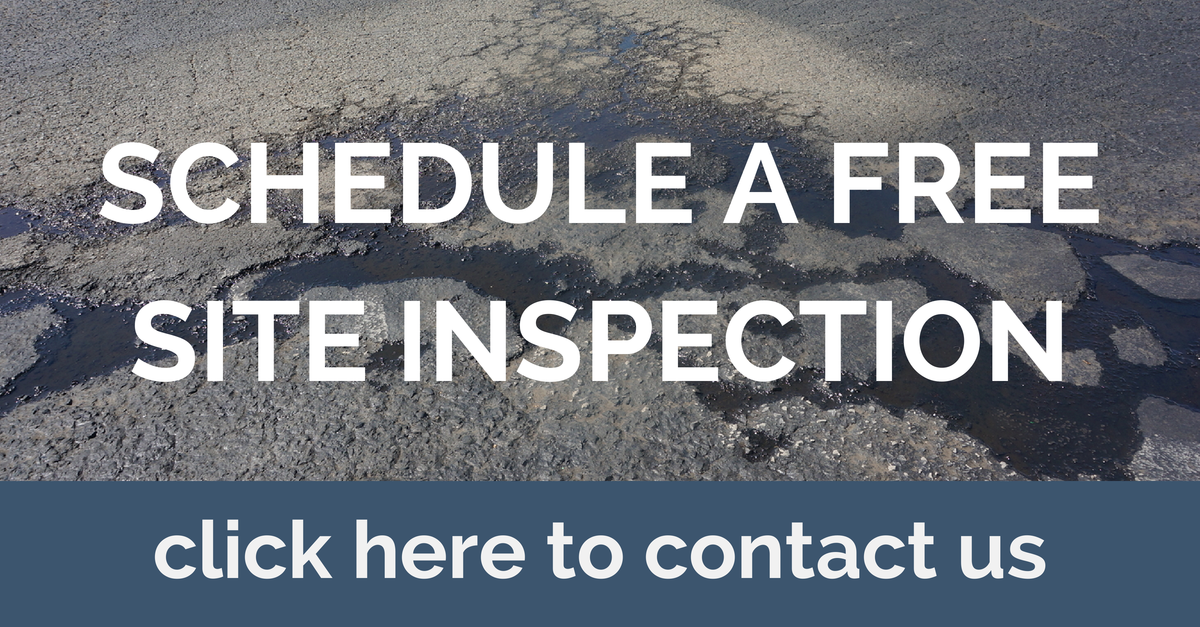![]() Last week Wednesday we held our first Lunch & Learn and more than 20 people joined us to learn about asphalt maintenance and what goes into an asphalt maintenance plan. Today I wanted to share with you our slide deck. We focus on why its important to maintain your asphalt, how your asphalt degrades, and what you should be doing to maintain it.
Last week Wednesday we held our first Lunch & Learn and more than 20 people joined us to learn about asphalt maintenance and what goes into an asphalt maintenance plan. Today I wanted to share with you our slide deck. We focus on why its important to maintain your asphalt, how your asphalt degrades, and what you should be doing to maintain it.
Key Takeaways
1. A "do nothing" approach to pavement maintenance is 6-10 times more costly than having a maintainance plan.
Your asphalt pavement immediately begins to degrade as soon as its laid down. If you don't protect it, UV rays, oxidation, and rain/water will slowly damage your asphalt. Small issues, such as surface voids and cracks, will become bigger issues if not addressed in proper time. Over a span of 15-20 years, your asphalt will need to be replaced, and that can cost you anywhere from $6-$8 per square foot.
2. Your best practices for a pavement maintenance plan are:
weeping & blowing
First of all, sweeping and blowing will keep your pavement nice and clean. Secondly, sweeping and blowing your asphalt will allow you to inspect the pavement. What you're looking for are surface voids and cracks. Surface voids lead to oxidation of your pavement while cracks will allow water to damage your base course.
Controlling vehicle load
Large vehicles like garbage trucks can put immense pressure on your asphalt. To limit the damage done by large vehicles, we suggest moving your dumpsters near the entrance to your property. If it's not possible, you should think about installing a concrete pad near your dumpster, as the concrete pad acts as a solid load-bearing solution.
Fixing drainage issues
Water is a big problem. You don't want water to sit and pond on top of your asphalt. Make sure drains are clear so that water will properly drain off of your pavement.
seal coating
Probably the most cost-effective practice to maintaining your asphalt pavement. seal coating protects your pavement from UV rays, oxidation, and water damage. Aesthetically, it gives your pavement that rich black color and provides a smooth surface for sweeping, striping, and marking. The cost to sealcoat ranges from $0.40 to $0.60 a square foot.
Crack filling
You need to fill cracks to stop water from entering your aspahlt, otherwise water will damage your pavement's base course (which leads to additional cracks and more water damage). Crack filling costs range from $5-$10 per linear foot.
Pothole Repair
Like cracks, potholes will allow more water into your base course. You can repair a pothole in one of two ways:
"Temporary-Permanent" Fix:
This is your standard pothole patch that you could get off-the-shelf from a hardware store. While it fills the pothole, an average product will not prevent additional water from entering the pothole, thus you'll need to continually fill the pothole. We have a product called Instant Road Repair, which fills the pothole and prevents additional water from entering your pavement. This product costs about $42 a bucket.
"Permanent" Fix:
A pothole is the result of a base course failure, so to really fix a pothole, you need to cut out the damaged area, recompact the base and then repave. Pricing is based on quantity, but ranges from $45-$60 per pothole.
Oil Stain Removal
Oil degrades asphalt by softening it. Oil stain removers can be used early to suck out the oil from the asphalt. However, if the oil stain has been sitting on the surface for a while, its likely that the oil has become saturated into the asphalt and a stain remover will not be effective. In that case, you would need to repair the area in the same way as a pothole.
The longer you wait to address an issue, the more expensive it becomes to fix. But if you keep your asphalt in relatively good condition, you can avoid additional repair costs and put off repaving indefinitely.
 Cole is the Manager of GP Maintenance Solutions. He’s been involved in the asphalt paving/maintenance industry since 2006 and has experience in both estimating and project management for City, State, Federal, and Private projects. Connect with Cole on LinkedIn.
Cole is the Manager of GP Maintenance Solutions. He’s been involved in the asphalt paving/maintenance industry since 2006 and has experience in both estimating and project management for City, State, Federal, and Private projects. Connect with Cole on LinkedIn. 
